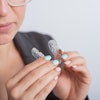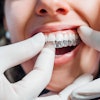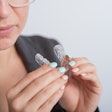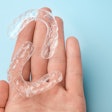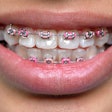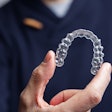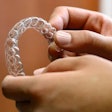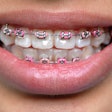
Do you encounter crazy assumptions about braces, such as caring for braces is challenging or that the pain braces cause is too much to handle? You can't blame patients. If they are uninformed, it's because they haven't met a dental professional who knows how to explain orthodontic aftercare in simple terms.
 Dr. Satish Pai.
Dr. Satish Pai.As a dental professional, you can prevent your patients from committing a blunder after getting braces. You can make them more aware of their overall dental well-being by sharing the following knowledge with them.
Myth No. 1: The pain from braces is too much to handle.
Pain from braces is a minor discomfort for most people -- and that pain goes away a short time after braces are applied or following an appointment to tighten one's braces. Advise your clients to be patient. Also, provide information about how they can lessen the pain.
The following tips can save patients with postprocedure pain and inflammation:
- Take over-the-counter pain medications.
- Apply ice packs and sip ice-cold water.
- Eat soft foods, and avoid hard, sticky foods.
- Apply orthodontic wax to wires that are irritating the cheeks.
- Rub oral anesthetic on sore areas.
- Rinse with warm saltwater.
- Softly massage the gums.
- Maintain good dental hygiene.
These are only a few generic tips on how people can relieve the pain caused by braces. You can add your own particular suggestions to the list.
Myth No. 2: Only the brackets are important.
Your patients should know about the important parts of the device that will be in their mouth for a few years! This way, they will know how urgent the situation is if something is broken or comes loose.
You can inform your patients by explaining the components of braces and their function:
- Spacers: These are little rubber bands that are used to separate back teeth from the other teeth. Spacers are one of the causes of braces pain.
- Rubber band or elastic: Elastics can speed up treatment. This stage will come close to the finish line of a patient's treatment.
- Brackets: They are attached to the front and side of teeth. Brackets should not be loose at any time.
- Archwire: This is a thin metal wire connecting the brackets.
Myth No. 3: Brushing your teeth is good enough.
The importance of good dental hygiene and oral care after braces are applied cannot be stressed enough. Food invariably gets trapped in the brackets of metal braces and underneath the removable aligners.
Your patients must understand that proper dental hygiene is essential for orthodontic aftercare. It prevents tooth decay and gum infections.
Apart from brushing twice and flossing once a day, advise your patients to either brush their teeth or rinse their mouth with water after snacking. Educate your patients about valuable tools like a water pick, a small interdental toothbrush, a floss threader, etc.
Ensure that your patients understand the importance of wearing orthodontic appliances, such as aligners, as directed. Tell them to contact you at the earliest in case of any damage to the appliance.
Myth No. 4: Missing an appointment is no big deal.
Patients generally miss at least one appointment because of their busy schedules. This can be irritating, especially when you need to tighten the braces for proper treatment progress. Take some time to inform your patients about the repercussions of taking follow-up appointments lightly.
You can inform them that they will prolong their treatment by missing an appointment. When patients understand what is at stake, they will mostly return on time for each appointment.
Also, be sure to tell them about the benefits of regular check-ups, like the following:
- Any infection of the teeth or gums can be caught early and promptly treated.
- Loose brackets and poking wires can be taken care of in a timely manner.
Myth No. 5: There's nothing you can do to get braces off faster.
If getting braces off faster is your patients' goal, communicate clearly that they need to follow the postoperative instructions to a T. Their dental hygiene, lifestyle habits, and diet should all be in line with the orthodontic aftercare you prescribe.
There's a lot of hearsay about food restrictions as a part of caring for braces. Therefore, it's always a concern for patients undergoing treatment. Explain to them that they won't starve due to braces. There are enough soft foods that they can eat with braces.
By investing time in counseling your patients about orthodontic aftercare, you significantly increase the chances of a smooth and successful treatment.
Dr. Satish Pai is an orthodontist and Ivy League-trained dentist who has served as a faculty member at Columbia University. As the founder of Putnam Orthodontics and a partner at Brite Orthodontics, he is dedicated to providing the best orthodontic care for his patients.
The comments and observations expressed herein do not necessarily reflect the opinions of DrBicuspid.com, nor should they be construed as an endorsement or admonishment of any particular idea, vendor, or organization.

